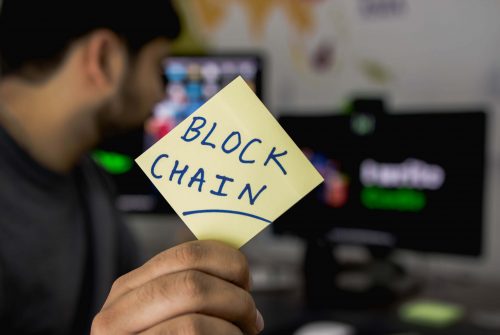Breaking down the Blockchain: why is essential for legal purposes
29 May 2019 | Written by Giulio Siciliano
Distributed Ledgers, Consensus, Smart Contracts: these are just some of the components and functions that contribute to defining the Blockchain technology. In this article we will talk about the ledgers: why is the blockchain different from the normal registers?

In a previous intervention, we tried to describe why the blockchain and the legal world should not be seen as antithetical elements: the legal world has a desperate need for innovation, but also new technologies need enforcement of the legal world. In order for this to happen it is, however, necessary that, even before defining the individual areas of application of this technology protected by the law, there is a correct legal definition of the phenomenon itself and its components. Put simply: it is necessary for the law to say what, in its opinion, is to be considered as a blockchain.
To do this it is necessary to analyze some individual components: the ledgers, the consensus, the smart contracts and a possible legal framework of the discipline. In this first analysis, we will discuss the ledgers, or why the blockchain can be considered as a single diffuse register and the characteristics that distinguish it from the normal registers.
The Ledgers. The blockchains are among the so-called distributed ledgers technologies. A ledger is nothing but a register. Within our system, we can find many of them and for the most disparate purposes. Let’s think, for example, of the accounting records in which companies include all their assets and liabilities. Still, if there were no records attesting to ownership, we could not talk about the real estate market. Even our forms of government, for proper functioning, need a fair amount of records. It is interesting to note that, in an absolutely transversal way to all the countries of the world, the “registers” are a common and recurrent component. We would not be wrong if we said that all the elements of our life as associates are enclosed within a number “x” of registers.
Well, the blockchain is a kind of register distributed (precisely, distributed ledger); distributed in the sense that, in practice, there is no “original copy”. Participants in the network can each maintain a “copy” of the register, with the certainty that it is exactly the same as all the others.
Managing the “consensus”. Wenger defined the blockchains as centralized from a logical point of view (the register, despite the distribution, remains “unique”) and decentralized from an organizational point of view (an indefinite number of participants in the network has a copy of the single register ). For this reason, computers that participate directly in a blockchain network are constantly communicating with each other to stay synchronized. This synchronization is defined consensus: its maintenance is, perhaps, the fundamental component of every blockchain, precisely because of the fact that there is no original copy of the register distributed among the participants.
Centralized registers have different elements of complexity. First, they are more easily manipulated: since there is only one original copy that all the others are simply compliant if this is compromised it is possible to make the whole system fail.
Even the opposite system does not seem satisfactory, that is to say, to provide each agent with its own register. In a system of this type, a transaction between two different agents must be transcribed, at least, twice independently. This implies a necessary reconciliation between the two (or more registers) and, consequently, the possibility that this may not be successful due to an indeterminate series of system errors. If it may seem an unlikely circumstance, we transport this complexity to the hundreds of millions of transactions that are carried out every day, all over the world, and multiply them by the number of participants in them. Especially in the relationships between more than two agents, it is not so unlikely that circumstances of this kind could occur. Thanks to the Blockchain, this complexity may no longer be necessary, precisely because of its peculiar functioning.
In the next intervention, we will talk about the consensus or the way in which the blockchain could remedy these problems while maintaining the same certifying function and without losing the trust of the agents in the system.





